Croatia: New Gold And Silver Proof Coins Honour Basketball Star Dražen Petrović
National Bank of Croatia release new gold and silver proof coins honouring a national sports figure.
The range of two gold and three silver coins commemorates the 60th anniversary of Croatian basketball player Dražen Petrović (1964 – 1993) who is regarded as one of the greatest Croatian, European and world basketball players. A shooting guard, he initially achieved success playing professional basketball in Europe in the 1980’s with Cibona and Real Madrid. Seeking a bigger arena after his career took off in Europe, Petrović joined the NBA in 1989, as a member of the Portland Trail Blazers. After playing mostly off the bench that year, Petrović experienced a breakthrough following a trade to the New Jersey Nets. While starting for the Nets, he became one of the league's best shooting guards.
Born in Šibenik, Croatia, by the age of 13, Petrović started playing in the youth selections of the local sports club and at the age of 15, he had already made the club's first team, just as Šibenka had earned a place in the former Yugoslav national first division. With young Petrović as the star of the team, Šibenka reached the final of the third level Pan-European club competition. After a year's mandatory service in the former Yugoslav military, the 6 foot, 5 inch Petrović along with his older brother Aleksandar moved to Cibona Zagreb, to form what was at that time, the best back court duo in Europe. Dražen made a name for himself at Cibona Zagreb or four seasons, from 1984 until 1988. Despite having been drafted by the NBA's Portland Trail Blazers in their third-round draft pick in 1986, he had decided to postpone his departure to the United States and in 1988, he signed with the Spanish League with club Real Madrid. However, Petrović fell fowl of the former-Yugoslav sporting laws stipulating that players could not professionally move abroad until they had reached the age of 28 and Petrović was still only 23 when he signed with Real Madrid. It was Petrović’s head coach at Cibona Zagreb who later admitted he was compelled to bribe relevant officials at the time in order to circumvent this law. Petrović helped Real to win the title of the 1989 edition of the Spanish King's Cup, over their Catalan rivals, Barcelona. The move was a positive stage in his career as was the league's regular season top scorer.
Petrović was still on the radar of the Trail Blazers and for him to join the team who had drafted him 60th overall in 1986. Being motivated by the potential new challenges that the NBA presented, he finally decided to try to establish himself in the league and left Spain rather abruptly at the end of the season. In assisting his prompt move, the Blazers assisted him by buying out his contract with Real Madrid enabling Petrović to finally join the Blazers for the 1989–90 season.
The Blazers valued Petrović as a shooter, but were concerned that he might not possess the quickness to play guard or the foot speed to play defence and brought him onto the team primarily as an outside threat to shoot three-pointers. As a consequence, and with great disappointment for his first season in the NBA, Petrović saw limited playing time. He had difficulty being productive in the limited role the Blazers had for him and the following season, he saw even less playing time. He was determined to be a success in basketball's highest arena but his lack of playing time during his second season in the league brought Petrović's frustration to a climax. At his insistence, a three-way trade between the Trail Blazers and the Denver Nuggets sent him to the New Jersey Nets in exchange for a first-round pick in the following draft and in time for the 1991 season. Petrović was made a starter for the 1991–92 season, his first full season with the Nets and "Petro", as the Americans had dubbed him, did not miss a single game. His determination, appeal, hard work and aggressive on-court demeanour established him as a team leader and a firm favourite with fans.
For one final time in 1992, Petrović could represent his home nation and it was during the 1992 Summer Olympics in Barcelona. For the firsttime, Croatia was represented as an independent country with Petrović being named head of the Croatian national basketball team. The Croatian team lost to the American Dream Team in the group stage, being awarded the silver medal, but Petrović was noted for having played some of his best games in his career. In the summer of 1993, after his best NBA season, Petrović travelled to Wrocław, Poland while still a member of the Croatian national team, he was playing a qualification tournament for the 1993 Euro-Basket. He was contemplating a departure from the Nets, disappointed that the Nets had not yet extended his contract. Petrović felt he lack of recognition in the league obliged him to consider leaving the NBA completely and playing club basketball in Greece where at least two Greek clubs were ready to offer Petrović three-year lucrative contracts.
Tragically, Petrović's career and life were cut short on the 7th June 1993 when he died in a car accident at the age of 28 in the German state of Bavaria. He and two companions Klara Szalantzy, a Hungarian model and basketball player and Hilal Edebal, a female Turkish basketball player were driving from Frankfurt to Zagreb when they collided with a transport truck. Both the driver, Ms Szalantzy and Ms. Edebal survived the crash but Petrović was ejected from the back seat of the vehicle. Dražen Petrović was buried in the Mirogoj Cemetery in Zagreb where his memorial site instantly became a place of reverence for his fans. Before Game 1 of the 1993 NBA Finals, the NBA held a moment of silence for Petrović, whose death occurred just two days before the event began and with Nets retired his number 3 jersey in November 1993. In April 1995, a statue commemorating Petrović's significance to the world of sports was erected in front of the Olympic Museum in Lausanne, Switzerland, thus making him only the second athlete to receive this honour.
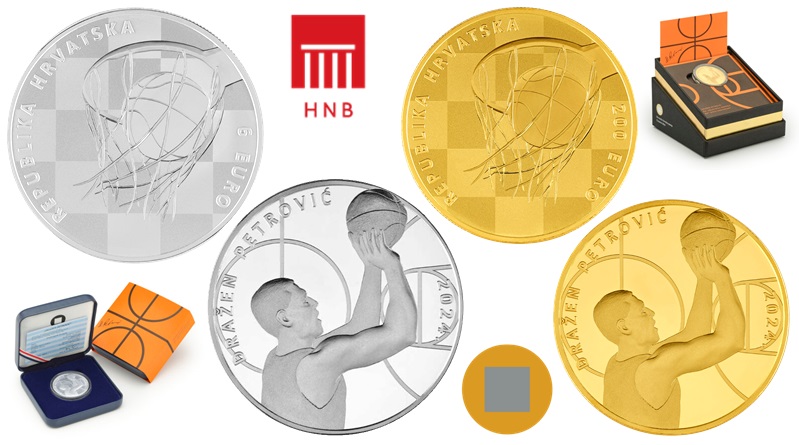
The gold and silver coins share the same design and are produced by the Croatian Mint at their facilities in Sveta Nedelja on behalf of the Croatian National Bank. Designed by Croatian sculptor Nikola Vudrag, the obverse side depicts Petrović in an action shot as he jumps to make the basket on the court. In the background are the demarcation lines of a basketball court and along the left rim is the text DRAŽEN PETROVIĆ with the year of issue, 2024 placed along the right rim. The reverse side is in tribute to the game Petrović saw notable international success with, the motif of the ball being dunked in the basket, the background of the traditional checkerboard pattern found on the Croatian crest and national flag. The text REPUBLIKA HRVATSKA is placed along the left rim of the primary design and the denomination 100 or 200 EURO (gold) and 4, 6 or 8 EURO (silver) is shown to the lower right rim.
| Denomination | Metal | Weight | Diameter | Quality | Mintage Limit |
| 4 Euro | 999.9 Silver | 31.1 g. | 38.6 mm. | Proof | 4,000 |
| 6 Euro | 999.9 Silver | 62.2 g. | 45 mm. | Proof | 2,000 |
| 8 Euro | 999.9 Silver | 155.5 g. | 60 mm. | Proof | 1,000 |
| 100 Euro | 999.9 Gold | 31.1 g. | 32 mm. | Proof | 500 |
| 200 Euro | 999.9 Gold | 100 g. | 45 mm. | Proof | 60 |
Each silver proof coin is encapsulated and presented in a custom National Bank-branded case accompanied with a numbered certificate of authenticity. The gold proof coins are encapsulated and presented in custom-designed basketball-themed cases accompanied with a numbered certificate of authenticity. The collection is also available as a special five-coin set or as individual items. For additional information, please visit the e-webshop of the Croatian Mint.

Download the Greysheet app for access to pricing, news, events and your subscriptions.
Subscribe Now.
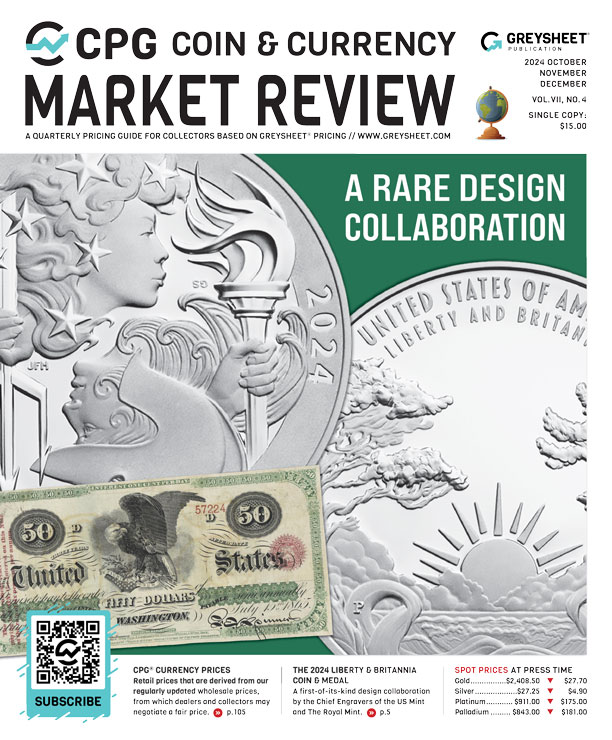
Subscribe to CPG® Coin & Currency Market Review for the industry's most respected pricing and to read more articles just like this.
Author: Michael Alexander









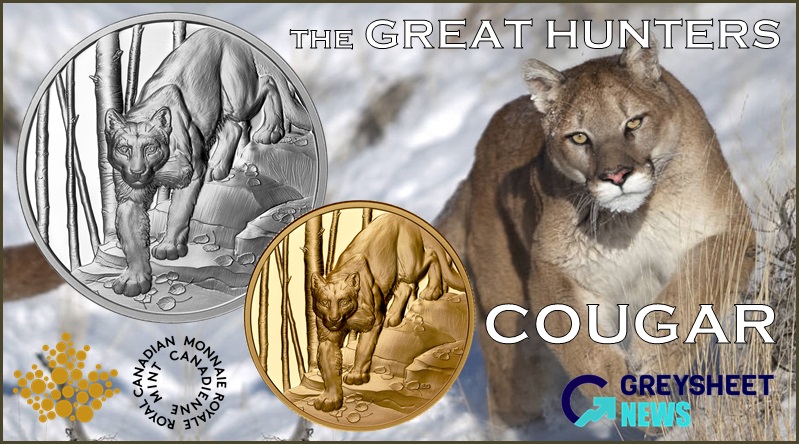
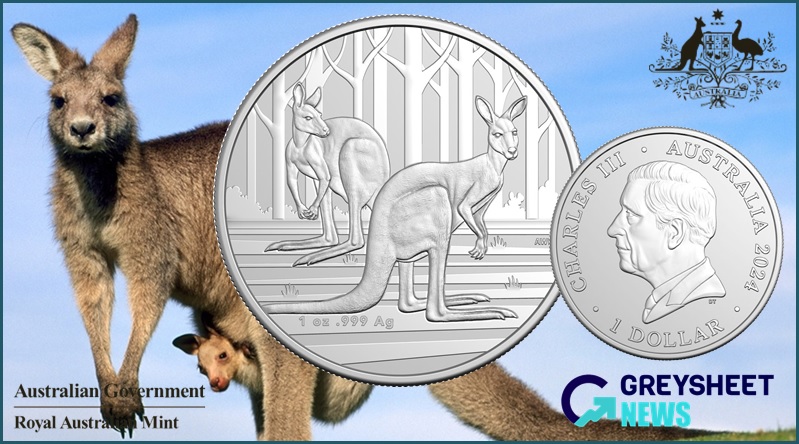
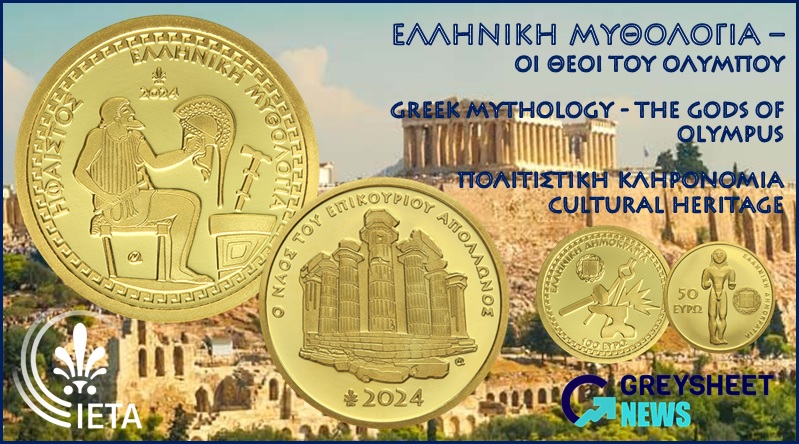
Please sign in or register to leave a comment.
Your identity will be restricted to first name/last initial, or a user ID you create.
Comment
Comments